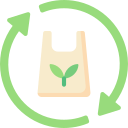Innovative Textile Sorting Systems: Turning Fabric Waste into Circular Value
Chosen theme: Innovative Textile Sorting Systems. Explore how smart sensors, AI, and thoughtful design transform mixed textile waste into clean, reusable streams that power repair, resale, fiber-to-fiber recycling, and truly circular fashion.

From Chaos to Categories: How Modern Systems Recognize Fabrics
Sensing the Unseen
Near‑infrared and hyperspectral cameras detect cotton, polyester, wool, and complex blends even when tags are missing. Combined with weight sensors and barcode or digital product passport lookups, the line builds a confident identity for every garment racing by on the belt.
AI That Learns the Fabric of Reality
Classification models trained on millions of spectra and images reduce mis-sorts, especially for tricky elastane blends. Each shift adds new examples—winter coats, embellished dresses, faded workwear—so the model keeps improving, cutting error rates while boosting purity for downstream recycling partners.
Human-in-the-Loop Assurance
Operators resolve edge cases the system flags—like heavily stained knits or metallic-thread partywear. Their decisions feed back into training data, tightening thresholds. One veteran sorter joked that the robot now spots polyester faster than she blinks, but still asks her about sequins.
Designing a Sorting Line That Flows
Loads arrive from take-back bins and charities, pass through depackaging and metal detection, then a fast manual pre-pick to remove shoes, belts, and hard goods. Gentle handling preserves resale-grade pieces while preparing the rest for accurate automated identification.
Purity, Throughput, and Yield
Facilities target over 90% purity for key streams, with throughput calibrated to local volumes. Dashboards show bale composition, reject causes, and hourly rates, turning abstract sustainability promises into concrete, auditable performance indicators everyone understands.
Carbon and Water Savings
Extending garment life and feeding high-quality fiber-to-fiber recycling avoids virgin production impacts. Diverting cotton from landfill reduces methane risk and preserves embedded water; clean polyester streams enable recycled content that lowers energy demand per ton of fiber.
Traceability for EPR and DPP
Digital product passports and extended producer responsibility rules are coming fast. Sorting systems attach IDs to each item or bale, logging fiber type, color, and destination, so brands can verify circular claims rather than rely on estimates or averages.



Case Story: A City’s Wardrobe Finds a Second Life
Civic bins overflowed with mixed fabrics, damp loads, and unlabeled garments. Volunteers burned out, recyclers complained about contamination, and bales missed specifications. The city feared the program would stall without smarter sorting and clearer data.
Case Story: A City’s Wardrobe Finds a Second Life
A compact line with NIR cameras, color vision, and AI routing went live in eight weeks. Purity jumped by double digits, while resale-grade pieces were protected. Local mills received stable cotton-rich feedstock, finally confident enough to sign multi-month contracts.
Cracking Blends, Color, and Contamination
NIR spectra decompose cotton–poly mixes, while data fusion with weight and handfeel proxies refines percentages. When elastane risks clogging a recycler’s process, the line diverts to an alternative route so every bale still meets technical requirements.
Cracking Blends, Color, and Contamination
Computer vision groups materials by color families, and dye-history cues from passports warn of pigments that disrupt recycling chemistry. Keeping colors consistent means less re-dyeing downstream, saving water, energy, and money for the entire value chain.
Cracking Blends, Color, and Contamination
Moisture sensors and hygiene checks quarantine wet loads; embedded hardware like zippers triggers alarms before machinery suffers. Stain detection routes garments to cleaning or downcycling, maintaining health standards while preserving as much value as possible.
Operations, ROI, and Continuous Improvement
01
Modular Growth
Begin with a core sensing lane and essential chutes, then add robotic pickers or extra diverters as volumes rise. This staged approach protects capital while steadily expanding the range of sortable materials and resale-ready categories.
02
Data-Driven Tuning
Daily reports reveal where errors occur—often at shift changes or after unusual donations. Quick experiments adjust belt speed, lighting, or model thresholds, turning small insights into lasting, step-by-step efficiency gains and more reliable bale quality.
03
People Make It Work
Cross-training keeps teams agile, and transparent goals foster pride in purity and diversion milestones. Celebrating wins—like a record bale of cotton-rich knits—builds momentum that spreadsheets alone can’t, anchoring the operation in shared purpose.



